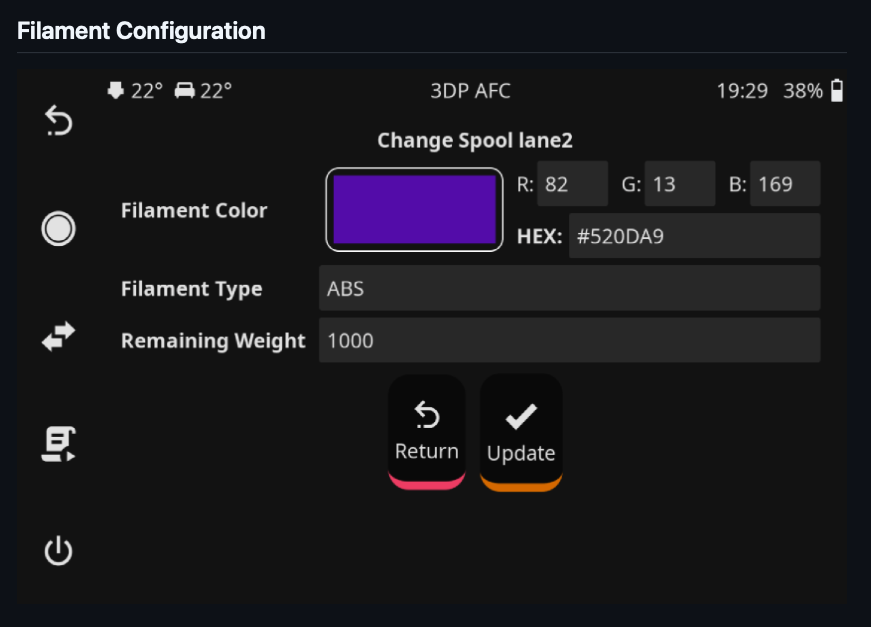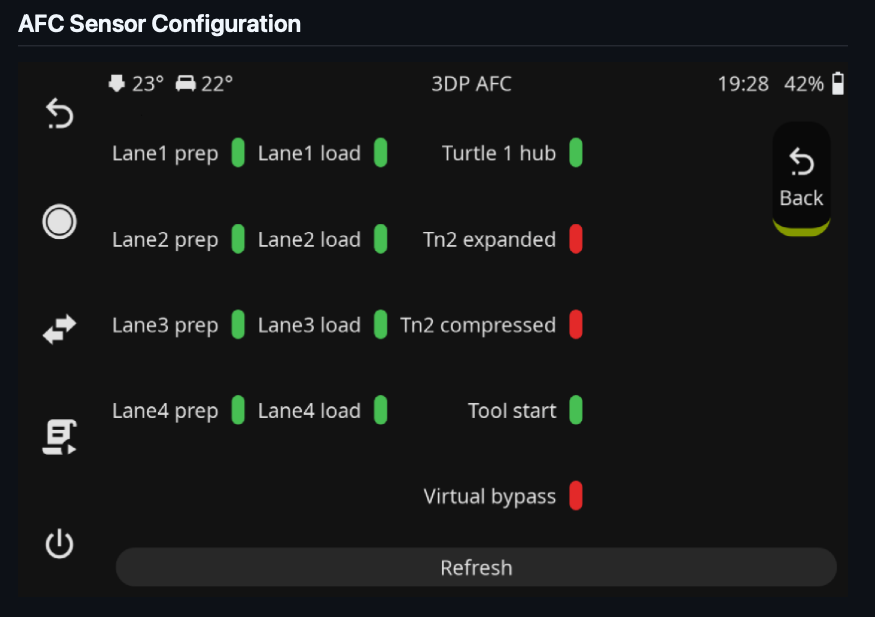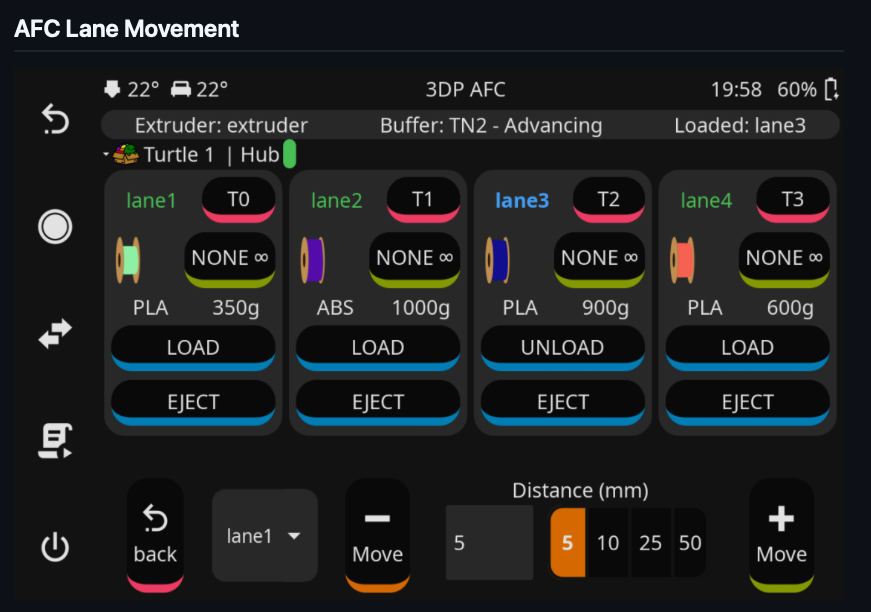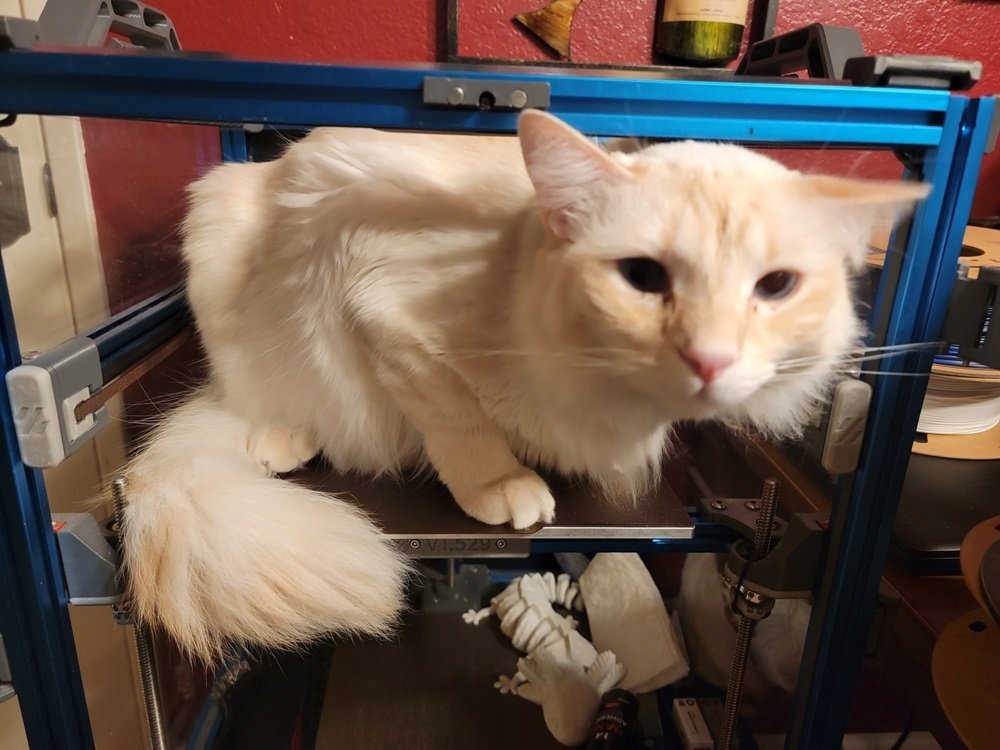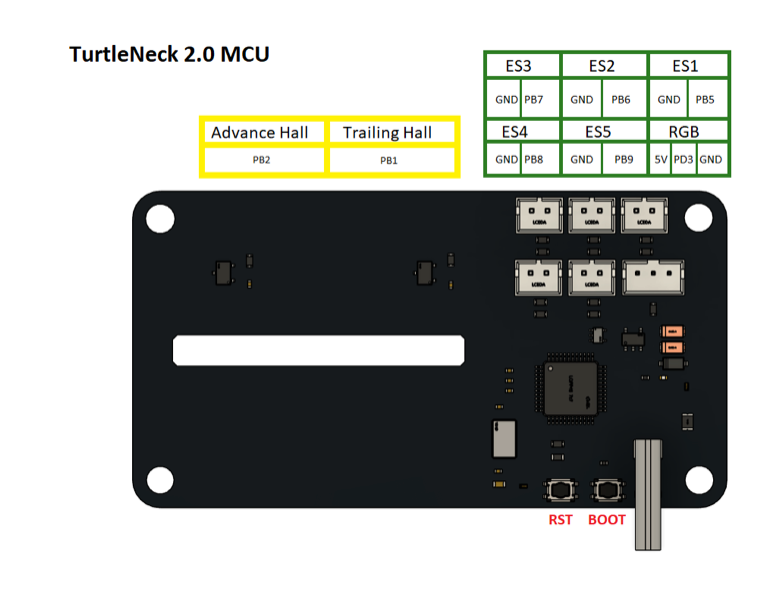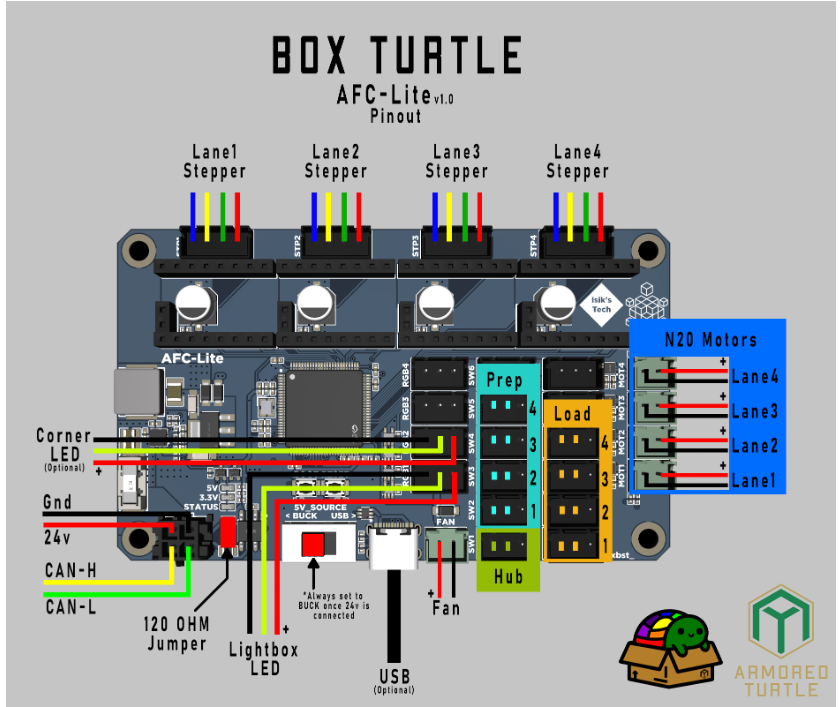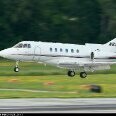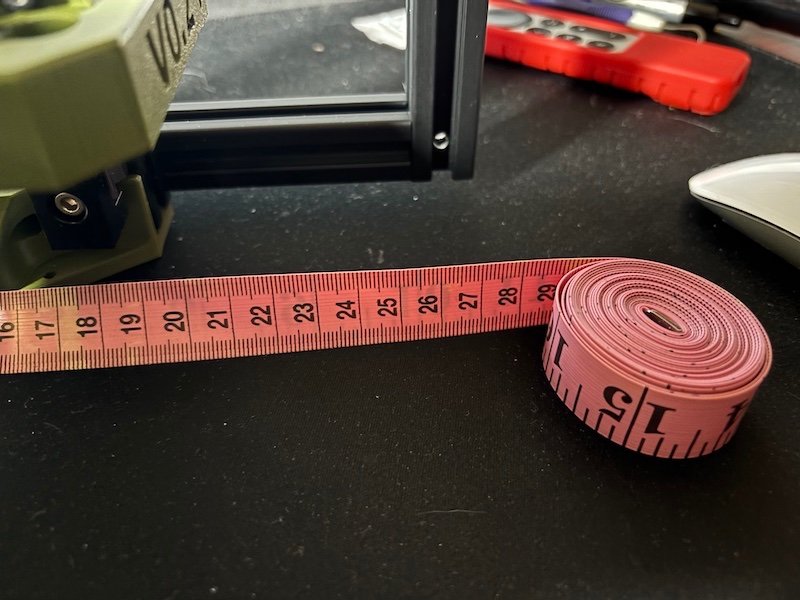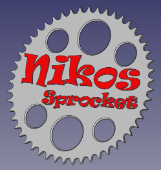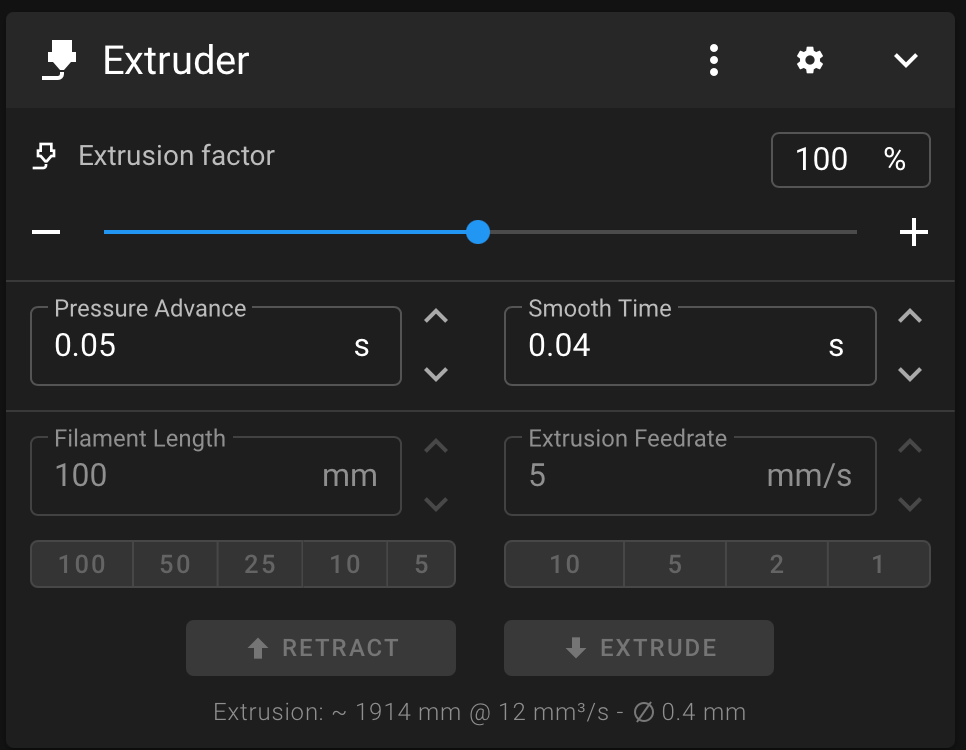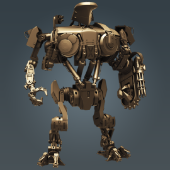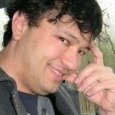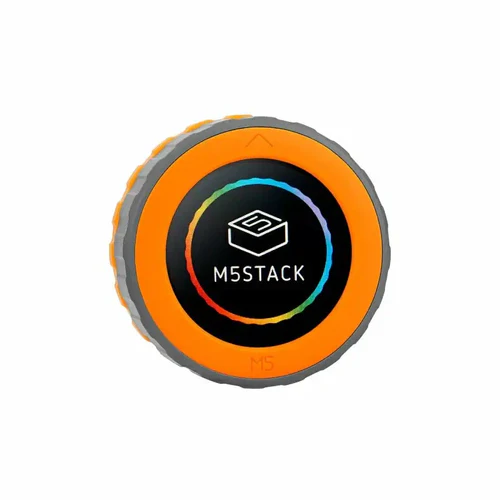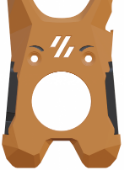Leaderboard
-
in Posts
- All areas
- Blog Entries
- Blog Comments
- Links
- Links Comments
- Links Reviews
- Tutorials
- Tutorial Comments
- Tutorials Reviews
- Support Replies
- Comments
- Files
- File Comments
- File Reviews
- Images
- Image Comments
- Image Reviews
- Albums
- Album Comments
- Album Reviews
- Topics
- Posts
- Records
- Record Comments
- Record Reviews
- Status Updates
- Status Replies
-
Year
-
All time
August 27 2021 - June 16 2025
-
Year
June 16 2024 - June 16 2025
-
Month
May 16 2025 - June 16 2025
-
Week
June 9 2025 - June 16 2025
-
Today
June 16 2025
- Custom Date
-
All time
Popular Content
Showing content with the highest reputation since 06/16/2024 in Posts
-
7 points
-
As the title states, I picked up a Milo V1.5 110v US Kit from Hector at Fabreeko last week while I was in Fort Lauderdale during the holidays. Here we are getting scorched by the afternoon sun, Milo is in the trunk with Steve Builds old Subaru that Hector bought from him in the background. Awesome guy, he gave me a full tour of his very impressive shop and warehouse. A number of things he sells he makes himself on a HAAS H2 mill and laser. I have to finish up my Voron 2.4 refurb first then I start on the Milo. Of course, there will be a build diary so stay tuned. I'm going to build a bone stock Milo at this point (famous last words, I know) if I do anything it will most likely be chip/swarf management related. I'll be printing parts in anticipation of the build. When I get those going I'll start a diary. Cheers everyone, Hope you had an awesome holiday! Pete aka Penatr8tor7 points
-
Hey all, I just installed an active chamber heater in the Trident! Also doubles as a bed heater (active--thus the motion blur). For whatever reason he's become fascinated with the printer lately. Now I really have to keep on top of cleaning the purge lines & skirts; can't have him eating them. Also have to keep the top panel on even for PLA because, yes, the dumbshit tried climbing in while it was running.7 points
-
This is quite misguided. I am a director of BTT and oversee the design process. I can assure you that BTT makes every effort to investigate issues, solve them and then iteratively improve on designs. A perfect case study is the thermistor circuit in question. Some on this thread have asked why it is designed the way that it is and our answer to that is simply this: try to kill our MCU by shorting 24V to the thermistor input (more common than you think when people clean with a wire brush and the hotend is active). You simply can't because the MCU is well protected by a high input impedance and any additional power is shunted to the power rails. This will not be the case on some other manufacturers with different circuits. We don't have a 100k resistor not because we want to save the absolutely, completely, thoroughly insignificant amount of money that a resistor costs to place but rather because we used to ground these holes and that caused ground loops. We never considered that a slow discharge would help with ESD events but now that is something that we are going to take into consideration and use to iteratively improve. Additionally, we will also be adding some ESD absorption circuitry to the thermistor input to save the thermistor in case of an ESD event.7 points
-
Well, I bit the bullet @7milesup. Here is the build diary of the Box Turtle AMS style Filament changer from Armored turtle. The Preamble: Decided on a Green and Gold (Actually it is yellow) colour scheme - I am in Australia after all! Opened the stl file configurator from the Build manual website, which gathers the stl's you need and packs it in a zip file for downloading. This is one of the things I really like - no sifting through directories of stl's to find what you need to print. Answer a few questions and away you go. I also like the way the build manual is compiled. (as is my habit, I read through the manual before starting the project). Though it is web based, and not in downloadable pdf form, it works. Instructions are clear and most of all, they are accompanied by a 3d-rotatable picture of the step you are at - Love it! No more twisting of necks to see exactly what needs to be done - just rotate the image. In addition to the Box Turtle stl's, you'll need to decide on an extruder sync sensor (Toolhead Buffer). I chose the Turtleneck buffer system as I have the Belay sensor on the Tradrack and wanted to build something different. The turtleneck has been advanced to the turtleneck 2, but that requires a dedicated PCB (Turtleneck2 MCU). (I may just order that - see how it goes). This can be ordered from Isik's Tech Site, as well as the dedicated ACF board. In addition to the toolhead buffers, a filament sensor is needed in the toolhead. I choose the integrated one's for the stealth burner from the ERCF project, as all the printers already have these toolhead installed. The other option is the Armoredturtle Filatector in-line sensor. (So spoiled for choice) The Build: 1. Box Turtle introduction. The introduction goes through the print settings, explanation of instructions, assembly queues and links to the stl-generator, GitHub and discord. It also discusses part selection and this is handy when it comes to using the stl-generator. I would suggest printing the "Calibration Fidget" in order to determine your printer tolerances, especially if you will be using two seperate printers to print the parts. (I generally load the bigger of the printers with the main colour parts and another smaller printer with the accent colour parts). The printers used on this build was the VZBot 330 for the main coloured parts, The Trident 300, for the accents and the V0.2 for the clear, opaque and TPU parts. Next: 2. Boxturtle Frame6 points
-
Nothing really changing on this--it's getting occasional use lately. But a fun little anecdote. My daughter needed a prop for a book report project in school. The book was The Boys In The Boat and she wanted a racing shell model as a display. I managed to find one on Printables; a single-seat modern one, but it gets the idea across. I made sure to use the V0 that she built and told her to mention that fact. The report went well (she got an A. ) and she said the teacher mentioned that was the first time anyone used a 3d printed prop. She later told me she also got extra credit after telling the teach that she built the printer used to produce the boat model.6 points
-
TRIP: Thought I'd share a few photos of our trip across the Nullabour Plain. (Treeless plain) Everyone living in Australia should do this. Had an amazing time and the sights were incredible. Did a total of 7252kmm (4776 miles) in 17 days - and I will do it again. The Raptor performed exceptionally well. Lots to beach driving as well as some off road trials. Unfortunately back to reality now! It sucks! PRINTERS: Better get back to the printers to restore my sanity. Have upgraded all the cartographers (Trident 250, Trident 300 Voron 2.4 300 and Voron 2.4 350) to touch and must say I am impressed. Used the Siboor guide and upgraded all 4 machines without issues. Still intending in upgrading to the Beacon H eventually (I have 4 of them in a tub waiting to be used). Frames are build for the clicky clack (Fridge doors) doors for the above 4 printers. First time I ordered from Misumi - Japan - and boy am I impressed. Quality and packaging - just wow!!. Awaiting the panels from the local supplier and currently printing the hinges, etc. All printers have been serviced Also need to bring the V2.4 300 in to update the motor mounts and idlers with the aluminium parts that has been sitting around for the past 6 months or so! Sigh........... Also need to decide what to do with the two ender 5's in storage. (a 5 and 5 Plus). Both are heavily modified already with linear rails and stealth burner toolheads. Was going to buy a Ratrig VCore 4 for something to do, but at nearly $5000AUD, I just cannot justify it, no matter how much I love this hobby. So do something with the enders! @7milesup - I have bitten the bullet and self sourced the parts for the Armored turtle - BoxTurtle. Have ordered the custom PCB and this has just shipped. Will do a build diary once all the parts are received. Kits are on backorder here in Oz (shipping in January 2025) and sell for around $500AUD. Sourced all the parts including the custom PCB for around $220AUD (including shipping) and should have all parts here in a couple of weeks. So for multicolour printing: Voron 2.4 350 - ERCF V2 Trident 300 - Tradrack Voron 2.4 300 - Tradrack Trident 250 - Intend to use armored turtle Til next time!6 points
-
Hey, i hope you're all doing well out there. Just wanted to say thank you guys. Many of you had suggestions and tips that really helped me out. Especially @Dirk @mvdveer @claudermilk. Took me some dang time, but i got it about where i wanted it and its awsome. Just got my serial request in, so i deem it "finished", as far as an ongoing project can ever be. I'll have an iced beverage on you guys.6 points
-
Did you guys hear that FedEx and UPS are merging? The new company will be called FedUp, although they also considered EffdUp.6 points
-
I've been working on the electronics bay. This is the #2 reason why I decided to do a refurb, 1st being the warped deck plate. It was my first printer kit and I just bundled and stuffed the supplied wiring as best as I could. Before... ...and what I have currently. Last night I focused on getting all of the toolhead wiring completed. Only things I have left to do is the TAP/Probe wire, LED wires, X end stop, exhaust fan and a couple things here and there. I'm hoping to power her up this afternoon.6 points
-
The color scheme for this build is military jungle camo. I opted to source the parts for this build and also to utilize parts I have available including the parts I did not use from the V2.4 kit. I used 2020 for the frame to accommodate the 15mm THK rail and standard 1515 for the build plate mount and the X gantry. As I learned from the first build (Mods as I go), I am now just printing parts as I need them so I can make modifications as needed or desired. This V0 frame is 470mm tall without the hat and 270mm wide. TR8x8 lead screw and coupling to the motor. The weight of the Z with the HSR15 bearings really makes it heavy but at the same time makes me even more curious if it would work Hmmm... I have some new Nema 17 motors on hand (StepperOnline 45Ncm 12-24V) so I will try them first and see. My question is what board can I use that can accommodate 3A (for LDO 42STH48-2504AH just in case) but small enough to fit the V0. Thanks in advance for your inputs.5 points
-
Finally finished the CPAP air supply system and the noise levels, no numbers, just comparing with my other standard Voron Stealthburner, are satisfactory; see below. I need to set up the umbilical "holders" and music wire before starting calibrations and tests. The motor dome may look massive, but it is only 90 mm thick and 165 mm diameter at the widest point. The hatched area it becomes 5% Gyroid Infill that I will assume has excellent acoustic suppression properties. I used TPE 85A to create all the gaskets, and they made a big difference on noise redaction due to air leaks without them. Btw, the air intake muffler is a modified VzBot v2 muffler but using two "tune" pipes in a single housing and added gaskets. The original design was "whistling" from the air leaks! This thing puts out so much more air that I cannot see using more than 40%; we will see soon5 points
-
This seems like a good place to comment on the new Klipper 0.13 update! https://www.klipper3d.org/Releases.html Klipper 0.13 has some neat new features... but will it crash various MCUs like the Klipper 0.11 > 0.12 did? For me, No, it does not. Victim #1 - Voron 0.2 with RPi4, BTT Pico on USB and BTT EBB36 on CAN via U2C: Went from an earlier version of Klipper 0.12 to 0.13.0.51 with no issues and remained operable with the Pico and the EBB36 still running 0.12 firmware. The Katapult-equipped EBB36 successfully flashed to 0.13 after doing a make menuconfig and reflash. The Pico reflashed by USB without issue. Victim #2 - Voron 2.4 with RPi4, BTT Octopus1.1 on USB and a Mellow SB2040 on CAN via U2C: Went from the latest version of Klipper 0.12 to 0.13.0.51 with no issues and remained operable with the SB2040 and the Octopus still running 0.12 firmware. The Katapult-equipped SB2040 successfully flashed to 0.13 after doing a make menuconfig and reflash. The Octopus reflashed by SD card without issue. So, it seems that the latest Klipper 0.13 is a relatively "safe"-ish major upgrade from 0.12. MCUs must still be manually configured and reflashed which is probably a good idea or even necessary as make menuconfig appears to have a new option enabled by default, "Optimize stepper code for 'step on both edges' "... I left this enabled , does anyone know what this is for? By the way, SHAPER_CALIBRATE does a whole new sweeping function... the toolhead now sweeps back and forth maybe 50mm while the vibration frequencies increase as before... on the V2.4 the results were slightly different with X going from MZV@57hz to [email protected] and Y going from [email protected] to [email protected]...5 points
-
This could be a handy mod, the configuration is done in KlipperScreen.conf. moonraker_host: 127.0.0.1 is the printer that the screen is installed on. The IP address of the printer you want to add is listed below. When the printer boots, it shows you which printer you want to access. If you want to return to the printer select screen, use the double arrow.5 points
-
There's some wonderful new filaments on the block... Fiberon by Polymaker! So far, I've tried two of them... PET-CF17 and PPS-CF10 Both of these filaments are very stiff, temperature resistant and dimensionally stable. They are also considered abrasive filaments, requiring the use of hardened nozzles. Here's my findings: PET-CF17 Fiberon PET-CF17 is a good choice if you have a standard hotend with a conventional Thermistor, rated up to 300C. Prints come out well at 270C though the surface finish wasn't great for me with a 0.6mm nozzle. The filament is quite brittle and needs a gentle filament path with no sharp bends. Warping is absolutely not an issue and prints are dimensionally stable and quite strong. The strength and heat resistance can be improved with post-print annealing at the cost of added brittleness. Like most filaments, PET-CF17 will burn if ignited.... it does not self extinguish either. This is not a cheap filament, going for about twice that of common filaments. (currently about $25usd for 500grams) PPS-CF10 Fiberon PPS-CF10 is a great choice if you have a high temperature hotend with thermistor / thermocouple / what have you/ rated to at least 350c. I upgraded to Revo High Temperature PT1000 which is rated to 400C. As with the PET-CF17, the surface finish was poor at 0.6 but pretty decent at 0.4 with a tiny bit of stringing.... perhaps some settings changes might help. Again the filament is brittle and easily snapped, maybe slightly less so than PET-CF17. Again, absolutely no warping and parts are dimensionally stable and quite strong. Post-print annealing can improve strength and temperature resistance (to 250C!). Breaking a part does not seem to favor layer lines when printed at 330C . If you drop a part, it sounds metallic! And, here is why it is my new favorite: This stuff does not ignite! I cannot get it to even start burning a little with an open flame... it just melts and smokes a bit. PPS-CF10 is very strong, has great layer adhesion, great dimensional stability, very high temperature and chemical resistance and all for the low, low cost of roughly quintuple that of common filaments! (currently about $70usd for 500grams). Sign me up for more because I cannot conceive of printing ANYTHING to do with a 3D printer Hotend or any structural part inside of an enclosed printer out of anything else at all. Printed parts do seem a bit lighter than ABS parts though I have no direct comparisons handy... yet. Comparisons are upcoming as I'm currently printing out Stealthburner Printhead parts. Because I was curious, I tested PPS-CF10 for electrical conductivity, and it does not conduct even when measured with a capacitor leakage tester rated to 1.6GΩ @27v, (that's 1.6 Giga ohms!) as opposed to a standard ohmmeter's range of 50MΩ at maybe 9v, which likewise reads "infinite" resistance. Happy Printing!5 points
-
5 points
-
5 points
-
Retired mechanic looking to hang onto the skills learned over 30+ years. Always enjoyed the diagnostic part - - once you know *what* is wrong, fixing it becomes the easy part! 3D printing is definitely exercising those skills! I've had to learn several new ones as well, starting with CAD (using mainly FreeCAD), "programming" of sorts in learning how to flash new firmware, then dumping that as too troublesome and shifting to Klipper and an entirely different set of issues! Like it a lot better than Marlin, though! Machine started as an Ender 3, quickly started changing things: quieter board (SKR mini E3 v 3, after toasting a v2), dumping all the noisy fans in favor of Noctua silent fans (and adding a dedicated 12V power supply to run them), adding a second Z stepper, trying various configurations of direct drive and hot end setups, most of which has issues with heat creep. Last outing was a HeroME setup with dual 5015 print fans and a V6 hot end, which worked well enough but really didn't meet expectations. Had Voron envy almost from day one (I'll get there one day!), and got parts for the Voron Stealthburner print head, retaining the V6 hot end for now. Added a linear rail to the X-gantry. Added drag chains for the bed, the X/Z gantry, and eventually the X/printhead as well. Didn't print them, just bought 'em from 'zon. Did print the "anchors" for the chains, first thing I ever used CAD for. Went for the "barf" LED lighting for it (beneath the Voron logo). kept the V6 but added a PT1000 thermistor. Not running YET but I'm knocking down issues as fast as I can find them (often with input from here!) Finding good information isn't always easy, and I've found that this site is one I can count on for good, accurate, and *complete* information, which is more than I can say for many, and has become one of my top "goto" sites. I appreciate your being here, and am happy to be a member!5 points
-
So I wanted a bigger 3D printer. SO I read about the Voron 2.4 build it your self printer. Looking at the well prepared Instruction manual, seems doable for me so I got the LDO 2.4 R2 RevD full kit. So far, other than a bad SLR12H linear bearing/rail everything seems pretty good so far. I have build it up to installing AB Idlers, now waiting for the replacement SLR12H. While waiting, I am printing all the parts needed for the build.5 points
-
Received the serial number for this build yesterday.... This build I suppose is now officially over.. but tuning and mods will be never-ending ha ha.. On to the Next...5 points
-
I've just done something silly - I've bought a Fystec Doron Velta kit. It'll be a real slow burner this one. I've always had an itch for a delta.5 points
-
I have tried a few different filament storage/dry box designs for individual 1kg spools, and I believe this version covers my filament storage/dry box needs. There are many difference versions out there; this is my original interpretation. Also, it had to incorporate a fully enclosed but can be opened container that will hold about 100cc of silica gel beads. No supports required, just some CA glue for the small walls. With dry silica beads, I get about 10 to 15% humidity reading. Used the following besides the prints: Smallest possible airtight cereal container to hold a 1kg filament spool. Use only 2 608-2RS Ball Bearings per storage box. Small Digital Electronic Temperature Humidity Meter Standard size bulk Blue Indicating Silica Gel Beads. Bowden Tube coupler5 points
-
I went sensorless when I upgraded my v2.4 (and I'll do the same in my Vz330). It does take a bit of tuning in but so far I've had no issues. There is one bonus to sensorless, once you've found the threshold and set it in the cfg. If it then starts stalling when homing the X or Y (mine did on the X axis) you need to check that everything is mechanically sound - my X rail needed cleaning and re-oiling (I'm no longer greasing my rails - I don't like sticky balls).5 points
-
No, I am not working away. I have a cottage in the country (30 min out of town) that is where my “stuff” is. We are there most weekends from about Thu evening to Monday morning. So, between stoking the fireplace and cooking, I get to do my techi stuff then. At my house in town, there is not time nor a good place for my “machines” This weekend, our son heads back to BC to university, so my wife put a prohibition on “personal time” - LOL , IT IS FAMILY TIME. In general, we are both “Makers” so no issues, she enjoys my laser cutter and 3D printer products too! Many a useful gadget is around the house.5 points
-
The Clockwork 2 files are not located in the V2.4 repo anymore. The CW2 and Stealthburner toolhead has its own repo https://github.com/VoronDesign/Voron-Stealthburner/blob/main/STLs/Clockwork2/Direct_Drive/[a]_latch.stl5 points
-
I have been debating starting a voron build for a couple years and have always found other things that occupied my time and money. A couple months ago I realized that I had a bunch of points racked up on slickdeals.net from using their platform to check for coupon codes. I always double check with their browser plugin to make sure I'm not missing any promos when buying computers for work. I never realized that I was racking up points which have added up to almost $500 while just trying to get better prices for work computers. anyway, I'm not sponsored by them to say that or anything, I was just surprised to have it out there to cash in on Amazon giftcards. I had an Octopus 1.1 sitting around from when I thought I might build an IDEX printer and never did. and I had a bunch of 2020 T slot sitting around from building a CNC machine and buying a laser engraver with a 1.5 meter square t-slot table and supports. So I had the frame and main board covered as well as a bunch of screws and other miscellaneous motors, wires, gears, and belts. I sourced most everything from Amazon or my basement pile of parts. My Amazon BOM is: BTT sb2209/rp2040 CAN on the Stealthburner CW2. Chaotic Labs Tap 2 upgraded red lizard (knockoff dragon) hotend 350mm linear rail throughout, because I had plenty of T-slot, so my Z is 50mm taller than the standard trident Mods: right hand power switch skirt trying to find a wire brush/purge bucket I like WAGO mount for fans in the skirt I found a CW2 main body where the PTFE tube goes all the way through to the extruder gears from the hotend for soft filaments, but it didn't work with the CW2 SB Main body for the CAN bus, so I'm working through that. I'm sure there are other mods and pieces that I am planning on, I just can't think of them right now. Thanks for everyone's help.5 points
-
A Gallery of my 350 sized V2.4 Crystal Prison The Build started out as your run of the mill end of 2021 Formbot Kit but has gradually been upgraded with higher quality Components and mostly self-designed / redesigned MODs. A big part of the current concept was getting rid of the unsightly Panel Clips which I've done away with by attaching the 4mm Acrylic Panels directly onto the Frame ( with 3D Printed Spacers where necessary ) using Flathead Screws with the Sides overlapping the Top and the Door overlapping the Top and Sides for practically seamless Glass Cube look - Hence the Name Crystal Prison. The front 8mm Acrylic Door required additional CNCed Pockets for the flush mounted look of the three 90° Print in Place Hinges and recessed "Handle". All of the original Gantry Parts have been redesigned for a more streamlined look utilizing Ultra Low-Profile Socket Head Cap Screws. Meanwhile the SmoothBurner named Tool Head has been reconfigured to a CPAP Design without the StealthBurner faceted look I couldn't care for. The overall Dimensions and weight are slightly bigger than that of a StealthBurner but cause no issues with the geometry of the Gantry - As such there's no loss in Print Volume. The Front Cover attaches magnetically to the rest of the Tool Head via Screws being attracted to recessed Magnets with the former also acting as registration Pins preventing the Front from shifting ( the front can only be re/moved by pulling it towards the front ). The Wiring during assembly is a Pain in the Ass as neither the LEDs nor the Connectors fit through the Channels requiring Soldering within a partially assembled Front. Barely visible is the Tool Head Cutter Port situated behind the Front Cover and in-between the Extruder and Part Cooling Section. The Cutting is done by a Type 11 Blade with the Reset Function accomplished by a 1x40mm Spring Steel Wire sandwiched between the Part Cooling Halves. The in the B-Idlers installed Cutting Pin made out of a decapitated M3 Screw. The Reverse Bowden Tube exiting out of the CPAP Tube - While not yet fully realized yet it is planned to use this feature to keep temperature sensitive Filaments like PLA cool until they've reached the Tool Head while printing them together with high Temperature Materials like ASA. Also nicely visible is the red Filament Tension Lever for the Bondtech LGX Lite in its normal / centered position ( left being open, right being soft materials ). The Tool Head with the Front removed - Much of its design came from Eytecz LGX Lite Design featuring an ERCF necessary Tool Head Sensor utilizing a Washer / MicroSwitch Combo. New A / B-Drives for the LDO-42STH60-3004MAC (S40) "Kraken" Stepper Motors using 30T Pulleys - While not shown in these Pictures I've since had to add active Cooling Fans to them as otherweise they'd reach temperatures beyond their Insulation Class B rating. The new Drives also come with Shaft Support Bearings at the Top. B-Drive Side with integrated Cable Management Passthroughs routing them to the Back Extrusion Channel and to the A-Side ( covered underneath an Extrusion Channel Cover ). CNCed Minimal Clearance Z-Axis Belt and Cable Passthroughs. To the left a self-made High Temperature Silicone Nozzle Brush, in the center one of the two 8mm Bed Surface Alignment Pins, and to the right the Bed Heater Deck Panel Connector. A custom variant of the CarlosRodriguess ERCF-M but using my Large Servo MOD with the latter having enough force to break the Side Latch on the Original ERCF Design. Different View showing the Excentric CAM Wheel attached to the Servo operating a Spring-Loaded Stylus for a Springy like effect and my own Top Hat Design for the Kieraneglin Thumper Blocks. Underslung BigTreeTech MMB CAN Board providing maximum cooling and protection. CAD Model of the ERCF-M - I had initially only decided to redo the Selector portion for adding the Large Servo MOD but in the end went full retard and modelled everything. The CPAP Housing with the PTFE Tube being injected into it. The Housing houses everything and comes with the option to divert part of the Air Stream over the FANs Control Board by removing the small ( red ) Gate below the Exhaust Port. In a surprising happenstance the Housing paired with the thicker than usual Acrylic Panel seems to provide a fair bit of Noise dampening against the CPAP A short Video of it.5 points
-
5 points
-
Sorry if this has already been covered elsewhere, but I wanted to share my experience with my new Stealthburner setup for my Voron 2.4 and how I wired it up. Key points to mention: I didn't want to add new wiring into the cable chain (lots of work and I didn't even have the wires to use anyway) I tested the LEDs ahead of time with a WLED ESP32 controller to ensure my wiring and installation of the head part works (link to that topic) I have unused ports on the PCBs that I wanted to use to avoid new wiring. Here's what I discovered going through this process: The docs recommend powering the LEDs from a 5V source, not the Octopus board Online folks talk about using the PB6 (BLTouch) pin vs. the PB0 RGB LED pin (center pin of the 3 pins) The PCBs use a common ground, which makes sense The Meanwell power supplies I used do not consider the case "V-", meaning you can't measure ground by connecting to the external metal case Most importantly, the 2 pin connectors for the X endstop and chamber thermister have one of the pins grounded (so you can't use both pins) So to accomplish this, I used the X endstop and chamber thermister connectors, but only one pin from each (since the other is ground). The ports were free for me because my X-endstop is on the gantry itself, and the chamber thermister is mounted elsewhere and connected to the octopus on it's own (without the toolhead PCBs). I just made an adapter cable with the RGB connector on one end, which splits into two different mini JST connectors. Note which pin I used for each. You can also just check continuity from ground to the pins to see which ones are grounded. I was able to use PB0 myself. So here is the final wiring under the printer: One pin from the breakout board connector goes to 5V on the small power supply for the raspberry Pi Another pin from the breakout board connects to PB0 on the Octopus board (RGB connector). Ground is already connected so there's nothing to do there. Hope this helps someone out there!5 points
-
5 points
-
I love my CPAP setup. It allows me to sleep at night and reduces my wife's anxiety. Oh wait, you meant on printers...5 points
-
Hello Voron lovers! take a look on my not fully assembled (and not fully modeled yet) custom build. I mixed zero’s gantry with pandora mod like rail positions and independent z from trident. Used laser cut steel parts to make it as stiff as possible. All steppers are outside the enclosure specs: 2020 frame, mgn12 everywhere, octopus, sbb2209 can, Voron tap, some steel and aluminum parts4 points
-
Mellow has assembled a pendant for the Millennium Machine, Milo V1.5 works with the Fly CDYV3 and the BTT Scylla motherboards. Milo Pendant They've done a nice job of making a single circuit board from all the components needed in this mod and flashed the Arduino with the pendant software. I will change the cabling to the Scylla motherboard and add a strain relief to the pendant case. They could have made a better effort in that aspect. I'll also confirm the wiring to the Scylla I/O connector when I receive the pendant.4 points
-
Keri, when I tried first "defining" the PT1000 with three resistance/temp values, then declaring that defined thermistor in the configuration, it gave Klipper a fit. Wasn't until I got rid of the definition and declaration, and simply stuck "PT1000" in sensor_type and 2200 for pullup resistor, exactly as midmadn said, that things started working better. Apparently when you try to tell Klipper something it already knows, it gets testy! I can see how that jumper works - - slick way to implement different resistor values for different thermistors! I don't think such strict accuracy is required for quality prints; likely using a PT1000 for printing with plastics is overkill, like using a shotgun to deal with mosquitoes, given that printing temp ranges stated for any given filament are closer to ballpark estimates than to three decimal-place precision figures. I'll forget about the precision and just take advantage of the greater range. Yeah.... this is exactly the kind of rabbit-hole I'm far too prone to get sucked into! I get caught up in the technical side of it and forget about the 'diminishing returns' aspect. It's great fun when you finally figure things out and everything works, but if it makes no practical difference in the end, it's just for fun (or "funstration," as my partner-in-crime likes to call it, given the dearth of accurate and *complete* information.) I think consumer/hobbyist-level 3D printing is still in the "wild-west' stage, much like phonographs were back in the day, when each manufacturer did their own thing, records played at different speeds for different makers, etc - - took quite some time for any industry-wide standards to become established. Still, this printer is serving it's purpose; I spent three decades learning to troubleshoot and repair some fairly complex equipment, and hated the thought of losing those hard-won skills in retirement. For me it's more about tinkering with the technology than actually printing useable and/or fun stuff.4 points
-
Just announced on discord and posted to printables. Yet another mmu. These guys have got to stop tempting me to build things! Link to HTLF4 points
-
Hello Everyone, Been interested in 3D printing since the days of having to build your own. Never had the time or money to do that. About a year and a half ago I finally decide to buy a printer. Bought a Bambu P1S and l was hooked. A few months later and I had to buy a second, this time an A1 Mini. I have enjoyed them both but still had the itch to build one. That's when I decided to pull the trigger on a Voron. Just received my Formbot Trident 350 kit a week ago. Still mid build and looking forward to all the learning, tinkering and modding in the future. Thanks, Dan4 points
-
Excellent point. Yes, I use it straight from the bottle but... I don't use the supplied brush. I take 1/2 a sheet of paper towel and fold it into a square. Then I soak one edge of it with alcohol. I then drip a few drops onto the build plate and wipe the entire plate with the alcohol-soaked edge to evenly distribute the Nano Adhesive. Kind of like using wipe-on polyurethane wood finish. I think diluting it with alcohol and spraying it is a really good idea. I'll have to give that a try. But... no matter how you apply it... the Nano really does the job.4 points
-
I recently installed a Rapido 2 plus on my RatRig. It came with an HF/Short silicone sock, the extender and long silicone sock and 2 V6 nozzles. This is because the extender is designed to use regular length V6 nozzles. That gives you 2 options... HF = no extender, short sock and regular V6 nozzle UHF = extender, long sock and regular V6 nozzle. There is no long volcano nozzle, you don't use a long nozzle... forget about long nozzles.4 points
-
I managed some progress today, but work interrupted. I get miffed and then I remember who pays me so I can enjoy this hobby. I am still short the 90 angel blocks to attach the extrusions which hold the heat bed. So, I had to pick and choose what I do to not get in a corner. 1. Assembled the heat bed. Has some help from my wife to hold up the magnetic sheet while I used a cake roller to attach from one end. IT went smoothly. Same with the heater. 4 hads are better than 2. I wired in the 125 degree fuse and attach a ground wire and it all still fits in the black wiring sleeve 2. Built the gantry. That went well too and I took my time checking end clearances and centering. All looks like the diagram. 3. I bought the titanium backing strips but forgot to order t-nuts and screws to attach them. So, stopping here until the 90 angle blocks show up as well as the hardware to attach the titanium anti-flex stripo before inserting the gantry in the frame. For this stage I have no additional tips than what is out there already. I am thinking 2 weeks before I can proceed again.4 points
-
Well, I use Fluidd. It's just subtle differences and is a matter of taste. I prefer how Fluidd handles the config file editing and like the appearance a bit better. The cool thing is you can run both and decide for yourself. Just set one to be a different port than 80--I use 90.4 points
-
Yes to all of the above! It's been great chatting sharing and problem solving with all of you. Cheers!4 points
-
It's a cross between nerd central and printer Paradise. I'll post some photos when I get back home. I've already walked 8km and there's still 3 hours to go.4 points
-
4 points
-
No offence taken. If these posts come up in searches it will be great for others. I couldn't get the software way to work on my fsyetc PITB V1 but eventually found this config worked for me. A different use case but still spi. I've been considering changing all my steppers to 48v tmc5160 so will likely be back here scratching my head soon!4 points
-
well, after some delays and electrical issues, I am finally back on track. I got a new Octopus 1.1, got it installed and mostly configured. I at least have the motors turning in the right directions and am able to home the head using the CNC Tap. now to dig into some detail work with the screen, which isn't working yet. And getting the Camera up and LEDs installed, WLED set up, and talking to klipper. onward and upward!4 points
-
The Frame In good two hours me and my dad assembled the frame. The Voron manual was very good. The extrusions are all precisely cut and i checked all the diagonal lengths. It seems to me square. (My table on the other hand is not!) We tested this on the big ass floor tile like so: There was no wobbling and the meeting points feel flush. I find that with you fingers its sometimes more precise that with a ruler and so on. As the extrusions so well cut, we figured it should itself align to be squarish. Every screw got loctite in it. Should set over night and be fixed tomorrow. Surprises Even the triangular pieces to hold the two extrusions for the bed are made out of aluminium. The paint seems to be ok. Does not come off to easy but a metal alignment cross is to much The DIN Rails are not cut evely so one hole is always not showing up. You can fix is easly with a drill but it was bugging me.4 points
-
I'm adding a mod I've had on the back burner for quite a while and finally got around to getting it installed. I've been working on installing gas struts to the lid of the old VZ330. I ordered a set of (2) 10" (25.4cm) long gas struts with 10lbs of force from Amazon. And also got it bundled with (4) 90 degree 10mm ball backets. The brackets mounted easily onto the 2020 extrusions of the printer and after my first try mounting them, I quickly ran into my first issue and also why I shelved the mod. What happened was that the force of the gas spring pushed the hinges up and out of their sockets. The VzBot hinges are designed such that they slot into a bracket on the rear of the printer. This lets you remove the lid by just lifting it straight off the printer. Great for lifting off the lid, crappy for using gas struts. So, in true Penatr8tor fashion... I redesigned them to be solid. The one on the right is the old design, the left is my new design. @TitusADuxass @mvdveer here's the two hinges (left and right) VZ330_Hinge 1pc_R.stlVZ330_Hinge 1pc_L.stl The lid hinges are the VzBot ones. And here's the hinge mounted. Next I installed the lid and attached the two bottom ball mounts all the way to the rear of the top 2020 extrusion and then installed the top mounts near the top center 2020 extrusion on the lid. I did have to fiddle around and tune the placement so that I got the right balance. Too far forward and the lid doesn't open enough, too far back and it won't close all the way. And here ya go... Open and closed.4 points
-
If you don’t smash your nozzle into the bed at least once, you’re not a real builder.4 points
-
Hi, I am the creator of the Filamentalist. There is actually very little that can go wrong with these. The most common issues are reversed installation of the 1-way bearing and not leaving enough space so that the center drive spacers can't free float. There is a lot of material and people to help! Refer to the FAQ (https://github.com/Enraged-Rabbit-Community/ERCF_v2/blob/rc2/Recommended_Options/Filamentalist_Rewinder/Filamentalist_FAQ.md), Troubleshooting Guide (https://github.com/Enraged-Rabbit-Community/ERCF_v2/blob/rc2/Recommended_Options/Filamentalist_Rewinder/troubleshoot.md), or the Filamentalist Discord group here: (https://discord.gg/uDcGxukRKd)4 points
-
4 points





